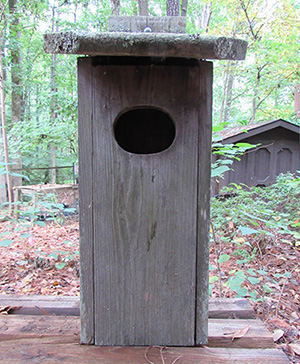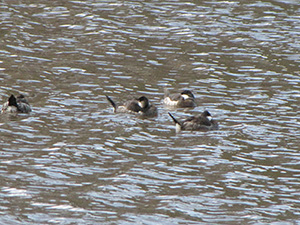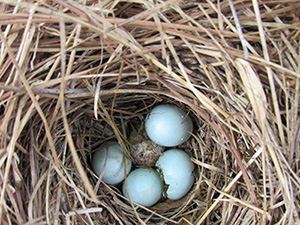Well, That’s Just Ducky!
By Bill Willis and Bill Steinmetz
March 9, 2018

The NIEHS’ duck box has been a beacon in Discovery Lake for years. It was recently taken down to check for occupancy and to make repairs. Plans are to relocate it further away from any pedestrian trail to encourage use by ducks.
According to our list of “ Birds of EPA/NIEHS RTP Campus”, there are 15 migratory duck species that visit the lake. Mallard ducks are the second most prevalent birds on Discovery Lake year-round, but they aren’t cavity nesters. They prefer to nest in the high grass along the shore line.
Most of these species are just passing through and wouldn’t nest here, however some of the migrating ducks are cavity nesters, like the Hooded Merganser, Wood Duck, and Bufflehead may be interested in our box.
Cavity nesting ducks will occupy old woodpecker holes or natural tree cavities. With the loss of mature hardwood stands and industrious woodpeckers, the ducks need assistance from man.
When the NIEHS duck box was opened, it was filled with pine straw and had been home to at least two clutches of bluebirds. Below the pine straw was an unopened plastic bag of wood shavings that should have been spread on the bottom of the house for the ducks, but was perhaps overlooked. The ducks most likely passed up this house as they looked for a more comfortable nesting place. Since the shavings were clean and dry, they will be used when the box is reinstalled.

Since ducks won’t carry bedding in their beaks to form a nest, it is important that a good 4-inch layer of wood shavings, not sawdust, be placed into the freshly cleaned box. The box can then be placed at an elevated onshore location or over the water.
The NIEHS box will be relocated to a site with less human activity. It’s possible one of the cavity nesting birds could use this box next year. Tips on placing and maintaining nest boxes are also helpful in identifying other wildlife that may be attracted to the box.
If a duck takes up residency, then egg incubation lasts between 28 and 32 days. The eggs become synchronized and all will hatch within 24 hours of each other. The young will leave the box the next day.




